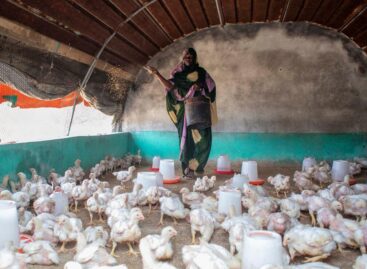FAO food price index falls in October, near-record cereal stocks expected
The Food and Agriculture Organization of the United Nations (FAO) has released its latest report on the world food commodity index, which shows that food prices continued to decline in October, mainly due to ample global supply.

The FAO Food Price Index – which tracks the monthly price changes of the most important food raw materials in international trade – averaged 126.4 points in October, 1.6% lower than the September value.
The FAO Cereal Price Index fell by 1.3% compared to September, following declines in major cereals. Wheat prices fell by 1%, cereals by 1.1% and the price index for all rices by 2.5%.
Meat prices fell by 2% in October, mainly due to a significant decline in pork and poultry quotations. Beef prices, on the other hand, continued to rise, mainly due to higher prices in Australia, driven by stronger global demand.
The FAO Dairy Price Index fell by 3.4% in October. Butter prices fell particularly sharply, as ample export supplies from the European Union and New Zealand pushed prices down. Milk powder quotations also slipped, reflecting subdued import demand and strong export competition.
The FAO Sugar Price Index fell by 5.3% from the previous month to its lowest level since December 2020, driven by high production in Brazil and expected increases in Thailand and India. Lower crude oil prices have further contributed to the decline in global sugar prices, as they have led to lower demand in the biofuel sector.
Meanwhile, vegetable oil prices rose by 0.9% in October, bucking the trend, to their highest level since July 2022. Palm, rapeseed, soybean and sunflower oil prices all rose, driven by a number of factors, including biofuel quotas and delayed harvests in the Black Sea region.
More details can be found here.
Record cereal harvest and stocks expected
The FAO also released its latest global cereal production outlook today. The new data shows that world cereal production is expected to increase by 4.4% in 2025, reaching a historic high of 2,990 million tonnes. The increase is expected to cover all major cereals.
According to the FAO’s Cereal Stocks and Demands Flash Report, world cereal consumption is expected to increase by 1.8% in the 2025/26 season compared to last year, due to ample supply and lower prices. Grain feed use could increase at an even faster rate.
The FAO forecasts that world cereal trade could expand by 3.2% in the 2025/26 season, reaching 499.5 million tonnes.
Related news
FAO: International food prices have been declining since September
🎧 Hallgasd a cikket: Lejátszás Szünet Folytatás Leállítás Nyelv: Auto…
Read more >Trump’s tariff cuts could reshape the global food market
🎧 Hallgasd a cikket: Lejátszás Szünet Folytatás Leállítás Nyelv: Auto…
Read more >Inflation in Austria was 4.0 percent in October, after September
🎧 Hallgasd a cikket: Lejátszás Szünet Folytatás Leállítás Nyelv: Auto…
Read more >Related news
How do young adults celebrate?
🎧 Hallgasd a cikket: Lejátszás Szünet Folytatás Leállítás Nyelv: Auto…
Read more >Vajda-Papír celebrates Ooops!’s 15th anniversary with a hybrid AI campaign
🎧 Hallgasd a cikket: Lejátszás Szünet Folytatás Leállítás Nyelv: Auto…
Read more >Pre-holiday shopping at up to half price
🎧 Hallgasd a cikket: Lejátszás Szünet Folytatás Leállítás Nyelv: Auto…
Read more >






